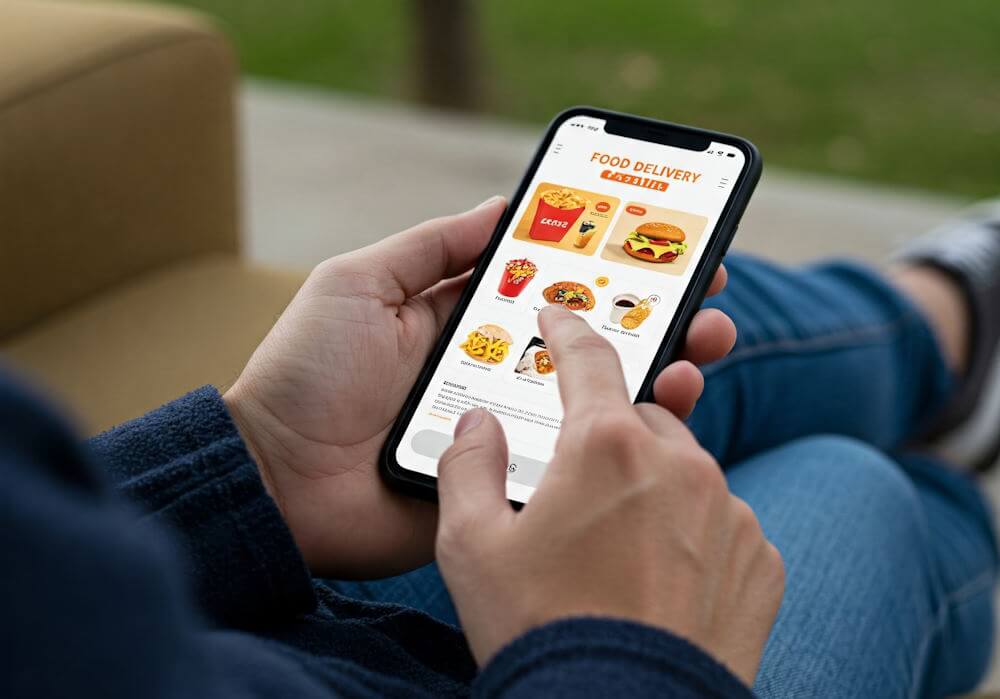In recent years, the food delivery sector has experienced significant growth, driven by the evolving lifestyles and preferences of consumers. Food delivery marketing has emerged as a crucial aspect for businesses operating in this competitive landscape, as effective marketing strategies can differentiate a brand in a crowded market. As more individuals turn to online platforms for their dining needs, restaurants and food delivery services must recognize the importance of targeting their audience through innovative marketing techniques.
The rise of food delivery services has reshaped the way consumers interact with restaurants. With numerous options available at their fingertips, potential customers are more discerning than ever. As a result, food delivery marketing plays an integral role in not only attracting new customers but also retaining existing ones. Implementing tailored marketing strategies helps businesses effectively communicate their unique value propositions and enhance customer engagement.
In a saturated market where the competition is intense, restaurants must focus on creating a strong online presence and brand identity. This includes leveraging social media, email campaigns, and search engine optimization (SEO) tactics to capture the attention of their target audience. Restaurants that invest in food delivery marketing can highlight their specialties, showcase customer reviews, and promote exclusive deals that appeal to consumers, ultimately driving sales and building brand loyalty.
As we delve deeper into the various strategies available for food delivery marketing, it will become evident that staying ahead in this industry requires a comprehensive understanding of market trends and consumer behavior. Effective marketing not only serves to attract new customers but also fosters a loyal clientele, providing long-term success in a highly competitive landscape.
Understanding Your Target Audience
In the competitive landscape of food delivery businesses, comprehending your target audience is paramount. Identifying the demographics of your customers—such as age, gender, location, and income level—enables businesses to shape their marketing strategies more effectively. For instance, younger demographics may favor mobile ordering and quick delivery options, while older customers may prefer personal interactions and detailed menu options. By analyzing the demographics, food delivery businesses can create tailored marketing campaigns that resonate with each group’s unique preferences.
Equally important are the preferences and behaviors of food delivery customers. Research indicates that convenience, variety, and quality are significant factors influencing customers’ decisions. Many consumers utilize food delivery services for the time-saving aspect and expect a wide range of choices that cater to their dietary needs. Moreover, understanding consumer behavior during peak periods can offer insight into when promotional offers or targeted ads should be deployed, maximizing engagement and sales.
To effectively gather these insights, various market research methods can be utilized. Surveys, focus groups, and interviews are traditional approaches that can yield valuable qualitative data. Furthermore, online tools such as social media analytics, website traffic data, and customer reviews provide quantitative metrics that help assess your audience’s preferences. Engaging with customers via platforms like social media not only invites direct feedback but also fosters a community around the brand, allowing for real-time identification of trends and preferences.
By developing a well-rounded understanding of the target audience, food delivery businesses can enhance their marketing strategies. This creates an opportunity to not only attract new customers but also retain existing ones through personalized experiences that meet their evolving demands.
Leveraging Social Media Platforms
In recent years, social media has emerged as a powerful marketing tool for food delivery businesses, providing a dynamic platform for engagement and brand promotion. The variety of platforms available, including Instagram, Facebook, and TikTok, allows brands to connect with diverse audiences, making it crucial for food delivery services to leverage these channels effectively. Crafting engaging content tailored to the platform is key. For instance, on Instagram, high-quality images and videos highlighting delectable dishes can captivate potential customers. A well-curated feed not only showcases the menu but also conveys the brand’s persona, helping to draw in and retain customers.
Building a loyal community is another vital aspect of utilizing social media. Interacting with followers through comments, messages, and regular updates fosters a relatable brand image. Food delivery businesses can create polls or ask for feedback on new menu items to involve customers actively. Additionally, user-generated content provides authentic testimonials, encouraging existing customers to share experiences while promoting the brand to their networks. Engagement-driven campaigns, such as giveaways or contests, can further amplify a brand’s reach while simultaneously cultivating a sense of community among followers.
Successful case studies provide valuable insights into effective social media strategies within the food delivery industry. For example, a prominent food delivery service may have leveraged Instagram Stories to highlight customer reviews and dining experiences, resulting in increased visibility and customer engagement. Another brand might have partnered with local influencers on TikTok to create short, engaging videos that showcased their food offerings, thereby tapping into a wider audience. These strategies not only enhance brand awareness but also drive customer participation and loyalty.
Implementing SEO Best Practices
In the digital landscape, Search Engine Optimization (SEO) plays a critical role in enhancing the online visibility of food delivery businesses. With an increasing number of consumers turning to search engines to find food options, businesses must employ robust SEO strategies to capture this audience. One of the foundational aspects of SEO is thorough keyword research. By identifying relevant keywords and phrases that potential customers use when searching for food delivery services, businesses can tailor their content to meet these needs. Leveraging tools like Google Keyword Planner or SEMrush can assist in uncovering valuable keywords that align with business offerings.
Once key phrases are established, the focus should shift to on-page optimization. This involves strategically incorporating keywords into website elements such as title tags, meta descriptions, headings, and throughout the content. The goal is to improve the site’s relevance to search queries, thereby enhancing its chances of ranking higher in search engine results. Additionally, optimizing images with appropriate alt tags and compressing them for faster loading times contributes to a better user experience, which is favored by search engines.
Moreover, creating localized content can significantly boost a food delivery service’s visibility in local search results. Utilizing geo-targeted keywords, such as “food delivery in [city name],” helps attract customers in specific regions. Developing blog posts or guides about local food trends, restaurant features, or culinary events can also position the business as an authority in the local food scene while simultaneously attracting more traffic. By implementing these SEO best practices, food delivery businesses can expect to see a substantial increase in website traffic, ultimately leading to higher conversion rates and enhanced customer engagement.
Creating Loyalty Programs and Promotions
In today’s competitive landscape, food delivery businesses must prioritize customer retention to succeed. One effective strategy for fostering loyalty among customers is the establishment of loyalty programs. These programs can serve as a fantastic incentive for repeat purchases, facilitating a more profound connection with the brand. For instance, a points-based system allows customers to accumulate points for every order, which can be redeemed for discounts or free items. Such schemes not only encourage regular interaction but also cultivate a sense of appreciation among consumers, ensuring that they return to make additional purchases.
Moreover, promotional campaigns also play a vital role in acquiring new customers and re-engaging existing ones. Discount offers can be effective in attracting first-time users; for instance, providing a significant discount on a customer’s first order can lower the initial barrier and drive conversions. Referral bonuses are another innovative strategy that encourages current customers to share the service with friends and family, resulting in new sign-ups. Rewarding customers for bringing in new clients creates an entertaining cycle of rewarding interactions and can significantly amplify business reach.
Limited-time offers can further elevate the impact of promotional efforts. For example, a short promotional window for specific menu items can generate a buzz and drive urgency among customers, prompting them to order sooner rather than later. These tactics solidify relationships with existing customers while simultaneously attracting new clientele.
Overall, creating robust loyalty programs and engaging promotional strategies is invaluable for food delivery businesses looking to boost sales and build a committed customer base. By carefully designing these initiatives, businesses can stimulate repeat patronage and cultivate a flourishing community of loyal customers.
Building Partnerships with Local Businesses
Forming partnerships with local businesses can be a vital strategy for food delivery companies seeking to enhance their market presence and attract new customers. Collaborating with grocery stores, gyms, offices, and other establishments can provide mutual benefits through cross-promotion and brand visibility enhancement. These relationships enable food delivery services to tap into established customer bases, creating opportunities for increased customer acquisition.
One significant advantage of partnering with local businesses is the ability to engage in cross-promotion. For instance, a food delivery business can collaborate with a nearby gym, offering exclusive discounts to gym members. In return, the gym can promote the food delivery service to its clientele, aligning both brands with health-conscious living. Such arrangements not only incentivize existing customers to try the food delivery service but can also introduce it to potential clients who may not have been aware of it previously. Moreover, these collaborations can extend to co-branding initiatives, allowing both parties to leverage each other’s branding to foster trust and credibility.
In addition to cross-promotion, partnerships can also facilitate collaborative events that engage the local community. Hosting a joint event, such as a health fair or food festival, can create excitement and draw attention to both businesses involved. These events can serve as an opportunity to showcase the food offerings and provide potential customers with a firsthand experience, thus encouraging them to utilize the food delivery service. Furthermore, creating a strong local network can lead to enhanced brand visibility, making the service an ingrained part of community life.
Overall, strategic collaborations with local businesses can significantly boost a food delivery service’s efforts to grow its customer base and deepen its community ties. By leveraging these partnerships thoughtfully, food delivery companies can position themselves as essential players in the local marketing landscape, increasing brand awareness and customer loyalty.
Utilizing Online Food Delivery Marketplaces
The advent of online food delivery marketplaces has transformed the way food businesses operate, providing them with unprecedented access to a broader customer base. Platforms such as Uber Eats, DoorDash, and Grubhub have become integral to the marketing strategies of food delivery enterprises. By leveraging these marketplaces effectively, businesses can not only expand their reach but also enhance their online visibility. One critical strategy is to optimize menu listings by providing high-quality photographs and detailed descriptions. This can significantly entice potential customers and give them a taste of what to expect.
Another essential aspect of utilizing these platforms is managing reviews. Customer feedback is paramount in the food delivery sector, as it directly affects reputation and visibility within the marketplace. Responses to both positive and negative reviews can showcase a business’s commitment to customer satisfaction while also encouraging new customers to place orders. Regularly monitoring reviews enables businesses to identify trends and improve their service or offerings based on direct customer feedback.
Moreover, many online food delivery platforms offer promotional tools that businesses can take advantage of. By participating in specials and discounts, food delivery services can attract a greater volume of orders. Seasonal offers or tie-ins with local events can be particularly effective in targeting specific demographics. In addition, it is advisable for businesses to keep their delivery procedures streamlined to ensure efficiency and speed. Quick delivery times not only increase customer satisfaction but can also result in favorable reviews and repeat business.
In summary, online food delivery marketplaces are essential cornerstones for expanding the reach of food delivery businesses. By optimizing listings, managing customer feedback, and utilizing promotional tools effectively, these businesses can significantly enhance their visibility and customer engagement within the competitive food delivery landscape.
Analyzing Data and Customer Feedback
In the ever-evolving landscape of food delivery businesses, analyzing data and gathering customer feedback have become pivotal elements in shaping effective marketing strategies. By leveraging data analytics, food delivery establishments can gain valuable insights into their delivery performance, customer preferences, and the effectiveness of marketing campaigns. This practice not only enhances operational efficiencies but also aligns services more closely with customer expectations.
To begin with, tracking delivery performance can provide a wealth of information. Metrics such as delivery times, order accuracy, and customer ratings serve as critical indicators of operational success. By systematically collecting and analyzing this data, businesses can identify areas needing improvement, ultimately leading to enhanced customer satisfaction. For instance, if data reveals frequent delivery delays, the associated operational processes can be reviewed and optimized, thereby reducing wait times for customers.
Similarly, understanding customer preferences is vital for tailoring marketing strategies. Surveys, social media interactions, and order history can all contribute to a richer understanding of what customers are looking for. By analyzing these data points, food delivery businesses can craft personalized marketing messages that resonate with their target demographic. For instance, if a significant number of customers prefer vegetarian options, targeted promotions can be developed to highlight those choices effectively, driving engagement and increasing order frequency.
Moreover, measuring the effectiveness of marketing campaigns is essential for continuous improvement. By setting clear goals and utilizing analytic tools to measure outcomes, businesses can evaluate whether their efforts are paying off or if adjustments are necessary. Through this iterative process of data collection and analysis, food delivery businesses can refine their marketing strategies and foster long-term relationships with their customers. Thus, the integration of data analytics and customer feedback serves as a cornerstone for success in the competitive food delivery market.
Staying Ahead of Trends in Food Delivery
The food delivery industry is constantly evolving, driven by advancements in technology and shifting consumer preferences. Businesses in this sector must be agile, leveraging emerging trends to retain their competitive edge. One of the most significant trends impacting food delivery is the integration of technology. Innovations such as artificial intelligence, machine learning, and mobile applications have transformed the way consumers place orders and how businesses manage logistics. For instance, AI-driven algorithms can simplify route optimization, ensuring quicker deliveries and enhancing overall customer satisfaction. Additionally, the proliferation of mobile payment systems fosters a seamless purchasing process, catering to the increasing expectation for convenience among consumers.
Another growing trend is the emphasis on sustainability. As consumer awareness of environmental issues rises, food delivery businesses are being urged to adopt eco-friendly practices. This includes using biodegradable packaging materials, implementing carbon offset programs, and partnering with local suppliers to minimize food miles. Adopting sustainable practices not only appeals to a conscientious customer base but also enhances brand reputation, making it essential for businesses to consider these approaches in their strategies.
Furthermore, shifting consumer habits post-pandemic and the rise of health-conscious dining options must not be overlooked. More individuals are gravitating towards healthier meal options, prompting food delivery services to broaden their menus with nutritious choices and transparency regarding ingredient sourcing. It is imperative for businesses to stay aligned with these changing preferences to attract and retain customers. By anticipating trends and being responsive to the market, food delivery services can thrive in an increasingly competitive landscape.





